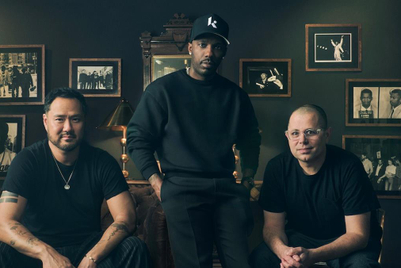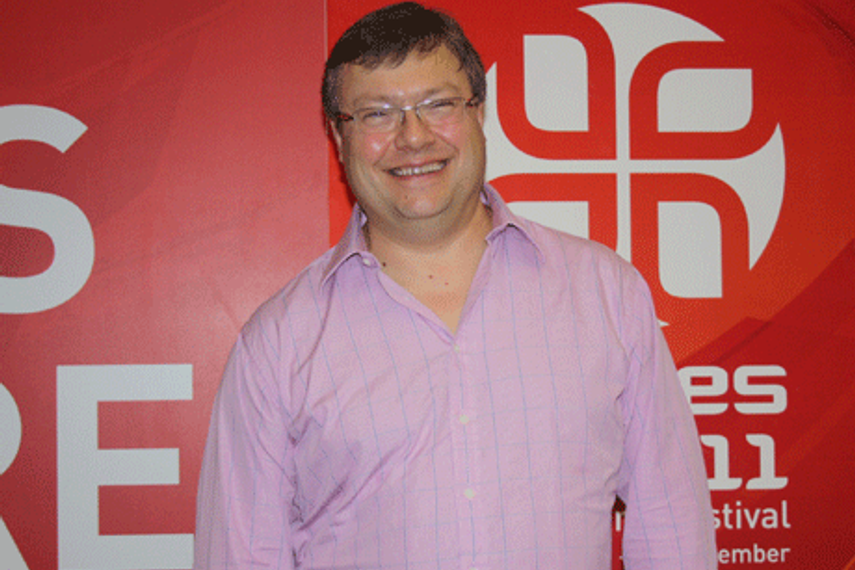
It's said the Indian alcohol market is growing by 19 million new consumers every year. What has been Diageo's marketing strategy for India?
It’s growing by at least that. Our approach has been to build the category from the top down. We’ve been focusing on our premium variants: positioning Johnnie Walker as a luxury brand. But we have a range of brands that start at Rs 600 (there are a lot of businesses below Rs 600, which we are choosing not to compete in at this time). We’re building a whiskey category through VAT – 69; we’ve revamped that and a premium version is coming. Then there’s Black & White and Johnnie Walker through Red Label, Black Label, Gold Label and Blue Label at the top of it. There is also vodka (along with whiskey, it’s the most profitable segment to be in). We have Smirnoff there and then Cirroc at the top end. So our strategy has been to start at the most profitable categories at the most profitable price points, and then build up from there. Captain Morgan is in the rum category, at around Rs 600, and what it’s doing is that it’s capturing a trade-up from a local brand or a very different type of experience from other brands around the same price point. We launched that in Maharashtra about a year ago and it’s exceeded our expectations.
The most challenging thing about India could be that alcohol advertising is banned; you have to work through a surrogate product. How has Diageo circumvented this obstacle so far for all its brands to create interesting work?
There is a practice by some players historically where there aren’t really surrogates. We respect the law and we’re doing it properly. What we find is that it makes us more creative. We do events and publicity around them, but it’s also about engaging consumers through all the digital mediums. By 2014, mobile penetration in India will be more than 100 percent – people will have more than one phone. If broadband access is ubiquitous, and what we find is that the ability to capture people digitally and engage them in our brands and events is phenomenal.
For example, we’ve managed to get 9000 consumers to give us their ideas on the Smirnoff Nightlife Exchange Project just through digital engagement. We doubled our fan base on Facebook to 100,000 consumers for the Smirnoff brand and there are six made-to-order clips that we use on Facebook. So we have consumer participation using digital media at scale. So in some respects, this works better than advertising anyway. Advertising is old-fashioned, it’s great for getting blunderbuss kind of scale. We know that reach is important and we try to do that, but what is important is that you have the relationship with consumers, and you do things they find exciting.
There has been news about Diageo returning to the Indian whiskey market. Will we be hearing of a new brand launch in that category, or others soon?
There is going to be a launch, but the brand hasn’t been unveiled yet [it was later announced that the new brand is Rowson’s Reserve]. We are going to participate in the Indian whiskey segment, at the price point of around Rs 600. We can now see how to participate profitably there. We dabbled in it a few years ago, but it didn’t really work out because we didn’t have the infrastructure or the sales coverage or the capability. In the last couple of years, we’ve built a very exciting business; it’s growing by at least 70 percent or more, and it’s giving us the confidence now to go into areas like that. We have got a very good product with good packaging, and we’re excited about that, but we’ll talk about it in a few weeks’ time.
You’ve spoken about marketing innovation, premiumisation and innovation as a strategy in APAC. Would this apply to India as well?
It’s no longer a world of talking at people, it’s all about using technology to engage them. We’re doing some work like that on Johnnie Walker and participating in Formula One later this year. On Vat 69, we have a gaming portal about to unveil. Marketing innovation is all about giving people a chance to take part in the brands.
On premiumisation, we’re building the brands from the top down. Johnnie Walker Blue is being relaunched in India as we speak. We’ve got a very well-defined reserve portfolio. We hosted the world-class bartender competition in Delhi this year at the Imperial Hotel and that’s a global event and the fact that we hosted it in Delhi shows our commitment to building our luxury brands in India. We have relationships with people like Tarun Tahiliani who does special editions for us. Premiumisation is going to continue as a trend, because typically one thinks it’s something happening at the top end of the market, but actually the exciting thing in India is that it’s happening everywhere. 19-20 million consumers coming to the market every year have varying levels of disposable income, but wealth is being created so fast in India at the moment that for everybody, Rs 400 is looking up t o Rs 600, Rs 600 to Rs 850, Rs 850 to Rs 1000 and so on, we have a better portfolio than most people and are actively encouraging that trade-up through the lines.
The important thing is not to patronise consumers. What we find is that taking our time with brands of international stature and crafting them as premium brands is the key to success.
The third thing is innovation. Captain Morgan is an innovation, arguably. The various flavours of Smirnoff that we’ve been introducing, and we’ve been getting into our groove doing more. We’re going to launch Johnnie Walker Platinum 18-year old later this year. Innovation is a way of both premiumising our brands and giving consumers accessibility to international brands.
Innovations like the 'Art of Blending' mobile experience and Johnnie Walker House, create brand experiences that are more than traditional media. What kind of balance do you follow in Diageo's marketing strategy in APAC?
This is a part of marketing innovation and there are three aspects of that we find useful. The first is the use of influencers, like Tarun Tahiliani. Second is 365 days a year, always-on digital engagement, because in a world where broadband is how people live, you can’t afford to only be there when you want to be there, but when consumers want you. Third is the power of physical spaces, particularly when we talk about premium segments, products with rich history, and also genuine product differences. The objective is to find an environment to talk to people about that and do it in a way that’s entertaining. Frankly, it’s also a luxury experience they can show off a bit.
We have the Art of Blending mobile activation in Taiwan. We have a permanent site in Ho Chi Minh city in Vietnam, where we do mentoring every day of the year. 70,000 people go through this in Vietnam every day, and we have a smaller version of that in Hanoi. In Korea, we’ve got something called the Diageo Lounge, where VIPs, top-level consumers come in and we host dinners there.
Most recently, there’s the Johnnie Walker house in Shanghai. We think of it as the world’s first whiskey embassy – it’s four floors, and only one of them is open to the public. That floor has a distillery model, where we can talk about how whiskey is made and we can customise gifts for them (engraving on the labels and choosing the box the bottle goes in or texture). Upstairs, we run by-invitation only events for opinion leaders in their fields, like artistes, business people, sports people and filmmakers who talk about their craft and what’s leading edge in their domain, and through that time, we also mentor them about whiskey. On another floor, it’s all about the art of blending – we have an interactive blending table where you can turn the bottle and see where it comes from, the various flavours that go in and so on. Ultimately, we’re able to offer for some consumers who want it, bespoke products at bespoke prices.
The idea of experiences is very important. At another level, we do it for Formula One. With ‘Step Inside The Circuit’ which we are actively promoting in India, people can meet the drivers, and go to the pit lanes.
We don’t have this right now in India; there are licences and so on, but we’ll look at it. But Indian consumers can take part in Formula One and in the Nightlife Exchange Project.
Do you have plans for Formula One in Delhi?
We aren’t a headline sponsor, but we are part of a global sponsorship with McLaren Mercedes. So we will be doing things there.
Tell us about the Johnnie Walker story in China.
We’re very proud of it, and think it’s leading edge work. What we want to do is to make Johnnie Walker a part of the fabric of culture in China. It’s very difficult for brands in this industry to cut through there – people end up doing the same things, very loud club parties or hugely expensive advertising. We want to get into the culture in a different way. We worked with Jia Zhangke who’s an internationally renowned film director and a number of his protégés at the Beijing Film School and we gave them the brief to make some films about progress in China. We got twelve beautiful three-minute films, whether it’s about a top businessman in the country who’s the chairman of Soho, to a successful businesswoman who’s now devoted her life to setting up orphanages for children affected with HIV, to a journalist from the China Economic Times who’s devoted his life to uncovering corruption at risk to his personal safety, to a man who’s resuscitated an old opera form, and perhaps the most unusual being a blind singer and poet Zhou YunPeng.
One film ‘Pan Shiyi’ was shown on proper television. The TV stations liked it so much and got such popular feedback from their viewers, they gave us a couple of weeks of free airtime. We launched this whole thing through Han Han, who’s a blogger with 40 million people following him, who said, “If you want to know what’s happening with progress in China, visit Johnnie Walker’s site.” We’ve had 73 million consumers see this campaign, 20 million people have actively engaged in it. It’s innovative, a little controversial and we’re proud of that. Simultaneously, with the Johnnie Walker House, we started building a culture for drinking whiskey among influential people from the top down. It’s a two-part strategy and it’s working because our market share in China is growing, brand equity scores are growing and we will continue to innovate there.
The Smirnoff Nightlife Exchange Project was another interesting idea from last year that we saw in India as well. How was it executed in markets across APAC?
Smirnoff is on a roll, we’re growing at more than 25 percent annually of a good size base. The Nightlife Exchange Programme is part of the brand’s global thrust to be known as a brand that stands for originality in everything, and particularly nightlife. So we set up cities around the world, where people swap their nightlife for a night. Bangkok was paired with Lebanon last year. It’s hugely successful and newsworthy, and it’s been announced that Madonna will associate with the programme this year. It’s a very strong programme and the amount of consumer buzz you can read online about this is staggering.
How much of a role does technology and digital play for Diageo's marketing plan, in India and APAC?
It is, but that’s not why we do it. People talk about technology in a way that’s potentially misleading. First of all, it enables people to see our brands but more importantly it gives them a chance to take part in our brands. People talk about digital as a media channel but what it really is is a tool for consumers to use. At Spikes, we’re going to talk about the consumer being the agency of the future, which is slightly tongue-in-cheek, but the serious point about it is consumers today, because of technology, are imposed upon by more advertising than ever in history. This is the biggest change since the printing press, and it affects more people than the printing press did. It’s good in so many ways, but in others, it’s clutter. Our responsibility as marketers is to create consistency with what our brands stand for, our values and how we look, and then tell consumers, “Well, here we are. What do you think?” Consumers can then choose to participate. We estimate that consumers will probably be able to have time or inclination to have a relationship with only about 12 brands from any category. We’re not really competing with other whiskeys, but also with Nike for share of the consumer’s mind and heart. So you have to have the humility to say there’s a huge democratisation of marketing communication, and it does make our job harder as marketers, because we have to be more disciplined about what the brand is so that consumers have the freedom to play, hopefully within the brand guidelines we lay out for them.
In a Campaign APAC interview, you spoke about getting different agencies to collaborate. Which all agencies does Diageo work with in India and have you been able to get them to collaborate? As a client, what do ask for from the advertising agency today?
We work with JWT, BBH and OgilvyOne in India [CI Note: McCann was appointed for Rowson’s Reserve later]. All of them are outstanding agencies, some of them a bit newer in India than others but they’re all very good. Diageo’s got a history now of doing this for several years – there is a shift here; whereas in previous years, the ad agencies were given the brief and everyone else just churned out whatever they came up with (and that still happens a bit), the culture we’re trying to come up with is that the idea is king and everyone plays their part in the idea. It may come from the ad agency, OgilvyOne, or an event or the PR agency or design – and there will be components to it. Agencies have to understand that that is the future, and ours do, but it puts more responsibility on our marketing managers actually to spot the idea, draft in the best people and hold the ring a lot more firmly. Traditional agencies are running to be the best in breed for us, because we will use smaller boutiques if they are better than global shops. While we follow long-term relationships, they are collaborative and all about excellence.
The session you were part of at Spikes was about how the consumer could be tomorrow's agency. What are your thoughts on this? And while ad agencies may share this view, are they able to give up control easily, in your experience?
The answer to the Spikes question “Are consumers the agency of the future?” is ‘No.” Although content could increasingly come from a range of different sources – there was some wonderful work I saw as a jury member of the Coca-Cola crowdsourcing project, and it’s very cost-effective – but the core of everything that we do is an idea. These ideas take ages to hone, and that’s the work of the client with the agencies. I don’t think that’s ever going to go away, but the way we work will be different. An example would be Johnnie Walker's 'Yulu' in China where the creative director from BBH in China was intimately involved in it, but it wasn’t his script or his films (they were the Beijing Film School’s), but the whole thing was his idea, and he worked with them as a lead in the process. Giving up control a little bit often leads to unleashing more talented people doing things that they want, and that’s the sort of principle we apply internally as well – create a co-operative environment that gives freedom to people. It’s what gets the best out of marketing people, and from agencies, and now agencies have realised that’s what will get the best out of a far bigger range of resources than they ever had possible.
What lies in the future for Diageo's plans for India?
We have a very solid base. We think double digit growth is there for the foreseeable future. We’ve ramped up our capability, sales and marketing, have great leadership on the ground. We will expand our portfolio but will concentrate on our core brands – Johnnie Walker, Smirnoff, Captain Morgan and Vat 69. These are brands that are gaining consumer traction now. India’s one of the largest beverage alcohol markets in the world, it’s also very big in the areas we don’t want to compete in, because of low margins and that’s not what we’re very good at.
Any foreseen impact of global economic developments?
We think we’re better protected than others. The recession sadly hits the majority of people, but where it doesn’t really affect people much is at the top end. Our whole strategy in Asia has been to premiumise, which over time, does reduce exposure to swings in fortunes.
(An edited version of this interview appeared in the print edition of Campaign India's Spikes Asia 2011 Report)


.jpg&h=334&w=500&q=100&v=20250320&c=1)
.jpg&h=334&w=500&q=100&v=20250320&c=1)

.jpg&h=334&w=500&q=100&v=20250320&c=1)


.jpg&h=334&w=500&q=100&v=20250320&c=1)
.jpg&h=334&w=500&q=100&v=20250320&c=1)


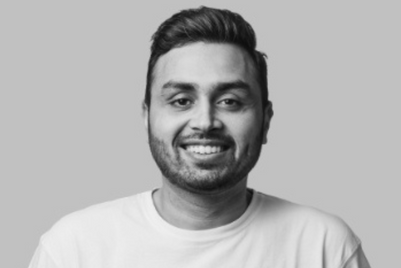
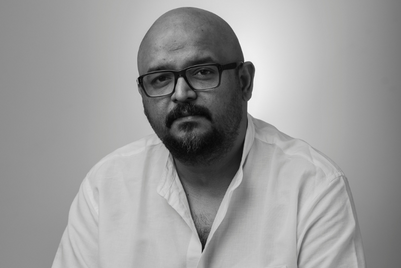
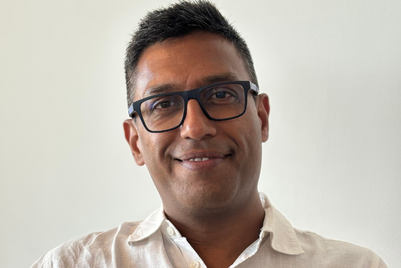

.png&h=268&w=401&q=100&v=20250320&c=1)

.jpg&h=268&w=401&q=100&v=20250320&c=1)
